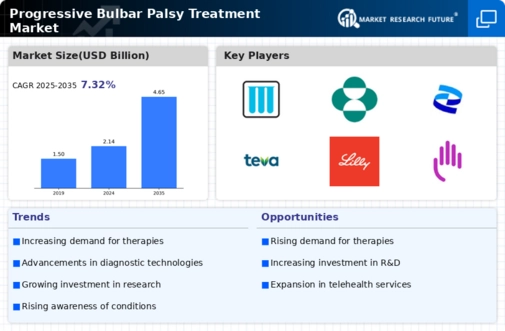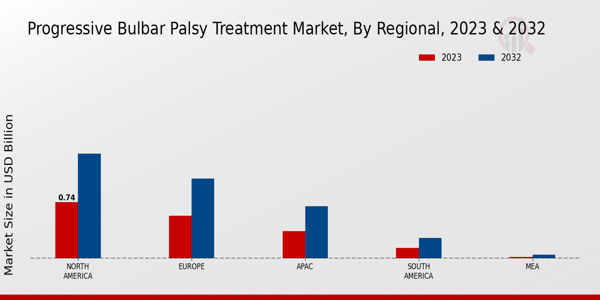The competitive landscape of the Progressive Bulbar Palsy Treatment Market has been characterized by a significant increase in research and development activities aimed at providing effective therapeutic options for patients suffering from this rare but debilitating condition. This market is primarily driven by the growing prevalence of neurodegenerative diseases and an increasing awareness of progressive bulbar palsy among healthcare professionals. Key players are focusing on innovative treatment methods, collaborations, and strategic partnerships to enhance their market presence. The competitive dynamics are further influenced by technological advancements in drug formulations and delivery systems, leading to more patient-centric solutions.
In addition, regulatory approvals and the availability of advanced diagnostic tools are contributing to the growth of this market, indicating a robust pipeline for future developments.Mylan has established itself as a formidable presence within the Progressive Bulbar Palsy Treatment Market, leveraging its significant strengths in manufacturing and distribution capabilities. The company is known for its commitment to quality and affordability, making it a preferred choice for healthcare providers and patients alike. Mylan invests heavily in research and development, which has enhanced its portfolio with products that cater specifically to the treatment of progressive bulbar palsy.
Furthermore, the company's global reach, buoyed by efficient supply chain logistics and extensive regulatory experience, enables it to deliver its products in a timely manner. These attributes contribute to Mylan's competitive edge, allowing it to maintain strong relationships with healthcare professionals while continuously responding to evolving patient needs and market demands.Amgen is also a key player in the Progressive Bulbar Palsy Treatment Market, recognized for its substantial investments in innovative therapies and biologic treatments. The company possesses a robust pipeline of drug candidates that target complex neurological disorders, including progressive bulbar palsy.
Amgen's focus on scientific research and development is complemented by its strength in bringing novel therapies through the regulatory process efficiently. Its established reputation is enhanced by collaborations with research institutions and other biotech firms, enabling it to harness cutting-edge technologies in its product offerings. Additionally, Amgen's dedication to patient access initiatives ensures that its treatments reach a broad spectrum of patients, positioning the company as a reliable source of treatment options within this specialized market segment.
























